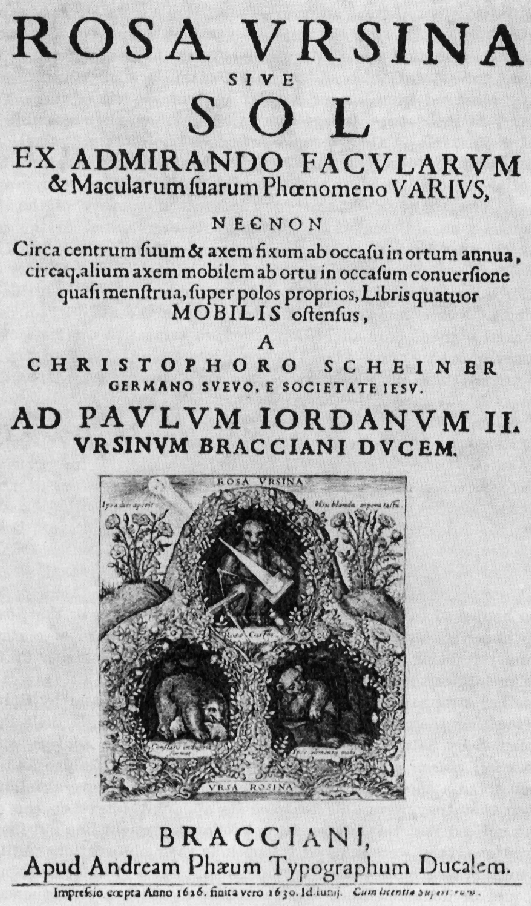




Frontispiece of Scheiner's Rosa Ursina, published in Bracciano between 1626 and 1630, reproduced from The history of the discovery of the solar spots, in Popular Astronomy, 24, W.M. Mitchell, 1916. Partly as a backlash following Galileo's condemnation, the massive volume (780 pages) did not draw very positive reviews following its publication, nor did it go down too well in history, largely because of the various vociferous attacks on Galileo scattered throughout Book I.
The book was not without merit, however. In it Scheiner uses his observations of sunspot paths across the solar disk to convincingly demonstrate that the Sun's rotation axis is inclined with respect to the Earth's orbital plane. This observation was taken up as his own by Galileo in his Dialogues as a further argument for the heliocentric hypothesis, which was to further provoke Scheiner into accusations of plagiarism. In addition, the book has proven very useful as a store of sunspot data for to the period immediately preceding the Maunder minimum. Scheiner's later book, Prodromus pro Sole Mobile, a rabid criticism of Galileo's 1632 Dialogues, was withheld from publication during Scheiner's lifetime, apparently because it was deemed overly distasteful by his ecclesiastic superiors.
Mitchell, W.M. 1916, The history of the discovery of the solar spots, in Popular Astronomy, 24, 22-ff.Eddy, J.A., Gilman, P.A., & Trotter, D.E. 1977, Science, 198, 824-829
 To search for a Solar Physicist
To search for a Solar Physicist
![]() To references and further reading
To references and further reading
last modification on january 18 2008 by
paulchar@astro.umontreal.ca
Tous droits réservés / Copyrighted by
Université de Montréal